Optimal Cord Clamping and its Effect on Infant Iron Levels with Alan Greene, MD
- What optimal cord clamping is and how it improves baby’s iron levels in infancy and later life
- Why Dr. Greene prefers the term “optimal” cord clamping over “delayed” cord clamping
- How you can advocate for optimal cord clamping in your own future birth plan

LISTEN TO THIS EPISODE
Episode Description
How long did your doctor wait to clamp the umbilical cord with your baby? If you’re like most parents, you probably have no idea. But the timing of cord clamping can have an impact on your baby’s iron status in infancy and later in life. Dr. Alan Greene is the founder of the TICC TOCC campaign (...long pre-dating that other Tik Tok :) and TICC TOCC stands for Transitioning Immediate Cord Clamping to Optimal Cord Clamping. In this interview Dr. Greene is teaching about how waiting until the pulsing of the cord stops - about 90 seconds longer than in conventional practice - can have lasting impacts on your baby’s iron and health later in life.
About the Guest
- Dr. Alan Greene is a pediatrician and advocate for natural approaches to optimizing iron status in infants and children
- He founded the TICC-TOCC campaign (before the other TikTok :) Transitioning Immediate Cord Clamping to Optimal Cord Clamping
- Dr. Greene advocates for waiting until pulsing of the cord slows to a stop, about 90 seconds longer than usual to optimize iron, stem cell, WBC, RBC & more

Links from This Episode
- Dr. Greene’s page on TICC TOCC (Transitioning Immediate Cord Clamping to Optimal Cord Clamping): https://www.drgreene.com/the-most-important-90-seconds-in-every-pregnancy
- Watch Dr. Greene’s Ted Talk on TICC TOCC about the most important 90 seconds of every pregnancy here.
- Delayed Umbilical Cord Clamping After Birth: ACOG committee opinion is here.
- WHO Guideline: Delayed Umbilical Cord Clamping for improved maternal and infant health and nutrition outcomes is here.
- Rana, Nisha et al. “Effect of Delayed Cord Clamping of Term Babies on Neurodevelopment at 12 Months: A Randomized Controlled Trial.” Neonatology vol. 115,1 (2019): 36-42. doi:10.1159/000491994 https://pubmed.ncbi.nlm.nih.gov/30278462/
- Baby-Led Weaning with Katie Ferraro program with the 100 First Foods™ Daily Meal Plan, join here: https://babyledweaning.co/program
- Baby-Led Weaning for Beginners free online workshop with 100 First Foods™ list to all attendees, register here: https://babyledweaning.co/baby-led-weaning-for-beginners

Latest Episodes

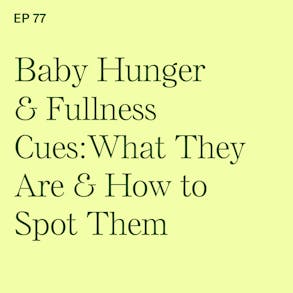
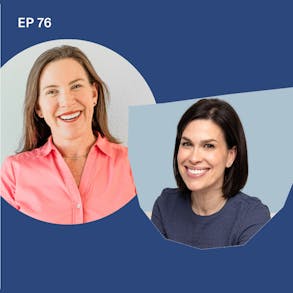
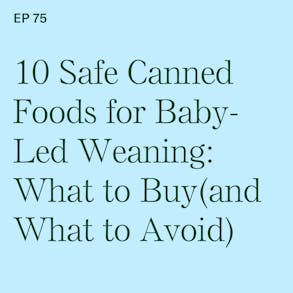
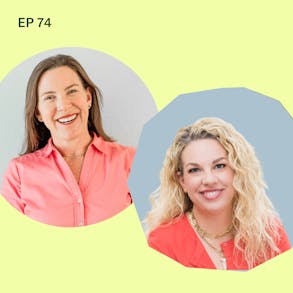
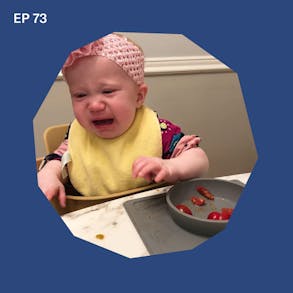
0 (1s):
And, Where did the iron come from? Historically. It came from birth During, the birth process. There was an iron transfer from mom to the baby that gave enough iron to get them through that first year.
1 (15s):
Hey. There I'm Katie Ferraro, Registered Dietitian College nutrition professor and mom of seven specializing in baby led weaning Here on the Baby Led Weaning Made Easy podcast I help you strip out all of the noise and nonsense about feeding, leaving you with the confidence and knowledge you need to give your baby a safe start to solid foods using baby led weaning Are. You planning on having another baby? Well if so, there's one really important thing that you can do to help lower your baby's risk of Iron deficiency And. You can do that within the first few minutes of your baby's life. Maybe you've heard that term delayed Cord Clamping.
1 (55s):
And we're talking here about the timing of the severing of the umbilical cord after your baby is born. And, It turns out that waiting longer than has been the standard practice for about the last century. That crucial waiting to clamp the cord that could result in bigger pushes of iron rich blood to your baby right after birth and long term increases in baseline iron status for children So. My guest today is Dr Alan Greene. He's an advocate for Optimal Cord Clamping and Dr. Greene actually call him the Original Tick Tocker because he's got this acronym for his campaign TOCC TICC TOCC. And it well predated the other TOCC. But TOCC stands for Transitioning Immediate Cord Clamping to Optimal Cord Clamping. And Dr.
1 (1m 35s):
Green is here today to talk about Optimal Cord Clamping. He prefers that term over delayed Cord Clamping. And he is gonna explain why in this interview it his amazing and soothing voice sounds familiar to you. It's cuz Dr. Green was previously on the podcast talking about another Iron related passion of his back in episode 160 Why White Rice Cereal Should Not Be Your Baby First Food with Alan Greene MD. Dr. Greene, who is a pediatrician, is perhaps better known for his white out movement. This is his awareness campaign to get other doctors to stop recommending Iron fortified white Rice Cereal as a baby's first food. So if you're feeling pressure or you're hearing recommendations to offer white Rice Cereal, be sure to check out episode one 60 with Dr. Green. But today he's here to share about something that you can do for your next pregnancy.
1 (2m 17s):
It's also something that you can tell your pregnant friends, family colleagues about. And that's Optimal Cord Clamping and its effect on Infant Iron levels. So with no further ado, here is Dr. Allen Green
0 (2m 30s):
Katie. It's wonderful to be with you again.
1 (2m 32s):
Previously you were here talking about the white out movement and alternatives to white Rice Cereal as an ideal first food for Babies. Today's chat is totally different cuz we're gonna be talking about Optimal Cord Clamping. And I guess technically it's related because Iron is the common thread here. But before we dive in, could you share what current projects you're working on in Infant health and nutrition that are exciting you?
0 (2m 52s):
Sure. The big thing that I'm working on right now is cultivating something called nutritional intelligence. And very simply nutritional intelligence is the ability to recognize and enjoy healthy amounts of good food. And it, it's an area of intelligence that's important to cultivate. We do a lot to help our kids learn language. You know, we read to them And, we point to, we name things for pointing at And, we do things to to cultivate math intelligence and teach them numbers and colors and all these other things. But across nature, one of the things that parents do the most is to teach their offspring to recognize and enjoy healthy amounts of good food.
0 (3m 34s):
And sadly, in the US especially a lot of corporations have tried to take over that job from us and teach our kids what to like and it's, we get to take that job back and teach our kids how to fall in love with great Foods.
1 (3m 46s):
I love that idea. I hope there are Registered dieticians involved in this endeavor. Indeed. All, right? Cool. Well you're one of my favorite doctors because you actually know about nutrition And, we talk about how, you know, in this country at least more than 90% of physicians have never taken a dedicated nutrition class. And so I think educating the people when parents go to their doctor to ask questions about food and nutrition, oftentimes the doctors haven't had a lot of training. So I appreciate the initiatives that you do to train other physicians and pediatricians about nutrition All, right? Dr. Green, what is Optimal Cord Clamping and how does it impact a baby's Iron status?
0 (4m 17s):
So you are right that this got started for me at the time of the white out campaign of trying to get white Rice away from being the dominant calorie for Babies a solid food calorie for Babies. The, the pushback that I got from pediatricians was, but they need the Iron, they need the Iron fortified Cereal. It's the only way they'll get Iron. And that just didn't make sense to me, right? It's not, it can't be true that Historically for thousands of years, Babies got their Iron from boxed Cereal. So the, my question I started exploring a little bit, where did Iron come from in Babies? I learned a few things. One is that the ones who are most likely to be Iron deficient are the breastfed Babies, which surprised me because you know, breast Milk is the perfect food.
0 (5m 4s):
So in looking at it, it turns out breast Milk is low in a couple of nutrients, Vitamin D and Iron and neither of those are a mistake, right? The vitamin D is low because Babies throughout history got most of their vitamin D from the sun. And now Babies spent a lot of their time indoors and they might have low vitamin D, but Historically it came from the sun And. Where did the iron come from? Historically, it came from birth During, the birth process, there was an iron transfer from mom to the baby that gave enough iron to get them through that first year. And in the last century we stopped allowing that by Immediate Clamping of the Cord.
0 (5m 49s):
So why is Iron important? Why were pediatricians so upset about it in the first place? So Iron is this critical mineral. It is literally the part of our lifeblood that allows us to take the oxygen we breathe and it gets grabbed by hemoglobin molecules that are Iron molecules and then transported to all the tissues in our body. And so if you don't have enough Iron, you don't have enough oxygen transferred to all the places in the body that need it. And people end up more fatigued and people end up with slower gross motor development and people end up getting sick more often and taking longer to get well when they have been sick. And the big thing is it affects thinking, it affects intelligence.
0 (6m 32s):
The W H O estimates that there are 2 billion people on the planet today who currently have decreased intelligence from lack of Iron. So we really want to make sure that Babies get plenty of Iron and let's go back to doing it the way that it used to be by optimally waiting at least 90 seconds before Clamping the Cord.
1 (6m 53s):
Okay, I wanna get more into that. As a breastfeeding advocate, I do feel obligated to point out that even though breast Milk is quote unquote, you know, low in Iron, it is the type of Iron that is very well absorbed by the baby's body. Yes. And, and breast Milk you guys is perfectly sufficient to meet your baby's nutrition needs for the first six months of life. So while it has quote unquote less Iron than formula, no one here is in intubating that it's insufficient. But what Dr. Green is saying is that at around the six month mark we start to get interested in Iron because we know that that bowl is that push of Iron that baby was supposed to get from mom at the tail end of pregnancy. It starts to run out. You guys all know that it starts to dissipate and that's why the Weaning diet includes Iron Foods.
1 (7m 33s):
But we're talking about is within the first few seconds of life, the Clamping of the umbilical Cord. Dr. Green, could you share what's kind of standard practice in the US and then what you are advocating for with the TOCC method? You're the Original, Tick Tocker. I like to always point that out and what that acronym stands for cuz I think this is a new concept to our audience.
0 (7m 52s):
Yeah, so first of all, I absolutely agree that breast Milk is a perfect human food. 100%. And I'm not at all saying that when I said quote unquote deficient, I'm saying people say that it doesn't have enough. I think it's the ideal amount that's in breast Milk and the ideal form, but also that the way that Babies got the big bolus of Iron early on was during the transfer for mom during delivery. So TOCC stands for, and this was before the other, so that's for Transitioning Immediate Cord Clamping to Optimal Cord care. And the basic idea here is that for all of human history, up until the about 1913 and every culture studied around the globe, what would happen is when a baby was born, the birth attendance would watch and the Cord would start to pulse and to push blood to actively pump blood into the baby.
0 (8m 48s):
And they would wait until the cord's pumping slowed down or stopped and then they would tie off and cut the court. And that was, that was standard human practice. And during that time, there is enough blood, enough Iron delivered to virtually eliminate Iron deficiency anemia in kids. So when I started talking about this in a big way, about 95% of the Babies born around the globe in the US and around the globe, that really precious extra blood was ending up in the trashcan. And now it has changed dramatically, but not all the way.
0 (9m 28s):
In the last study in the US from November, about half of the hospitals in the US routinely offer what they call delayed Cord Clamping to most Babies
1 (9m 39s):
What's delayed and what's, I mean I know it's a semantics thing, but is that different than Optimal Cord Clamping or are they the same thing?
0 (9m 46s):
They're pretty much the same thing. I just really object to the term delayed because delayed has this idea that we're somehow doing something actively, we're we're doing something late or, or when really what we're doing is doing it the way it's always been, right? And not just always us, it's, it's primates too. The other, all the other apes wait until the court has stopped pulsing before they suffer the court. And it's not just primates, it's every mammal that that does the same thing. There's no mammal that actively severs the Cord before it stops pulsing So it. It's built into nature to have this amazing transfer that happens.
1 (10m 26s):
So what happened in 1913 that we stopped doing this.
0 (10m 28s):
So in 1913 we had this, what happened was births were moving into hospitals And, we had the idea that what we want to do is as fast as we can get the baby away from the mother and do medical stuff, you know, dry them, warm them, do all these other things. And it, it was well intentioned and it happened to be at this time where the world was connected like never before So it spread very quickly worldwide.
1 (10m 52s):
So right now is this standard of care to do the delayed slash Optimal Cord Clamping or is it like 50 50, some people are still getting Immediate Cord Clamping. And what are you doing or what are organizations doing to help move that more towards a waiting period so baby can get that valuable transfer of Iron rich blood?
0 (11m 11s):
A couple things. First of all, the, the standard of care in terms of guidelines has finally changed. The World Health Organization says it's never good to sever the Cord in less than one minute than a healthy baby unless there's a reason to do otherwise. And some kids, by the way, it, it does make sense. There are medical reasons why you want to do it right away
1 (11m 31s):
If it's like wrapped around the baby's neck. That's sort of situation.
0 (11m 34s):
Yeah. Or if mom's got a placenta previa or abruption placenta, there's big bleeding that's happening all. All I'm saying is that the default should be to do it the way that it works in nature. And, and now the Amer, the ACOG also agrees in the the US guidelines, most major medical centers in the US agree. But in practice about half of the baby's born still don't get it. So we're a lot of folks, a lot of folks now are trying to raise awareness that this is something that you can ask for most obstetricians and even more than that, midwives and other practitioners are aware of this, but it may not happen if you don't ask
1 (12m 9s):
Is it being taught in medical school?
0 (12m 10s):
It is being taught in most medical schools now So it, the, the pendulum is, is changing pretty quickly.
1 (12m 16s):
And I know a lot of the parents and caregivers listening are like, well I already have a baby so I kind of miss the boat on that. And no, we do tons of education about how to offer Iron rich naturally occurring sources of Iron and Foods that Babies can safely eat. But I know many of you will go on to have Babies in the future. Dr. Green, what can these parents do? What should they ask for in order to be advocates for Optimal Cord Clamping?
0 (12m 38s):
So a couple things. One is that for people who've already had their Babies, most Babies do fine if if the it was clamped immediately. It's just some that end up not having quite enough Iron and, and there's other things besides Iron I should mention too in that before birth about a third of a baby's blood is in the placenta and it's a moment they're born about a third of it's still in the placenta. And so there's all this blood that's left there And. If you wait an extra 90 seconds after the Immediate Clamping you wind up with about 30% more blood volume, about 60% more red cells, even more than that, more white blood cells which help fight infections.
0 (13m 20s):
You end up with more oxygen, higher oxygen levels during the golden minute you end up with more stem cells that you get. There's so many things that are really, really valuable that come not just the Iron.
1 (13m 30s):
So this term, the golden minute, but you're also saying 90 seconds, are they kind of, is there an Optimal time And we should wait
0 (13m 37s):
The golden minute is the name for this. Get the first minute where Babies get enough oxygen, they tended to have a much better outcomes and during that time, if the Cord hasn't been clamped, then you're continuing to get oxygen. Cuz cuz the baby got all their oxygen through the umbilical Cord before birth And. We continue to get it as long as it's still pulsing So it during that critical window. You want it still open. At least my recommendation for most healthy kids is to wait until the pulsing slows or stops, which is usually about 90 seconds.
1 (14m 11s):
Okay. And do parents just ask their doctor that the pregnant mom talks about it in the as part of the birth plan?
0 (14m 18s):
Yep, exactly. So it's super simple. So if you're going to be having a baby or a loved one's gonna be having a baby, just suggest talking to the whoever's gonna be doing the delivery. Make it part of the plan, ask for that. And another thing that you can do that'd be really important for your friends if they're having Babies to, to share this on social media, the old, the 1913 thing changed very quickly because of global travel. Now we have social media that's even faster. So parents together can really turn this around.
1 (14m 49s):
And are there any statistics, I mean I'm sure, sure if ACOG and the World Health Organization have adopted this approach to, you know, how much we could reduce Iron deficiency anemia or is it like a percentage increase in hemoglobin value? Is it six months? Any sort of statistical data that you could share for parents who are like, wow, okay this is totally worth asking for in doing this. Well
0 (15m 8s):
The biggest statistical data that came out just recently, it's not exactly about Iron, but they were looking at all cause mortality in kids. And the ones who had the delayed Cord Clamping throughout childhood had about a 17% decrease in all cause mortality. Now that's an association, not causation but it, the extra stem cells, the extra white blood cells, everything else seems to make a big difference there in terms of Iron deficiency anemia, it cuts the risk of having that, I forget the latest numbers, 85%, something like that. It's really dramatic. And then if you get the Iron rich Foods that you're talking about, which Babies are designed to get and breast Milk which has the absorbable form, then it really plummets the risk of ever getting Iron deficiency anemia.
1 (15m 51s):
And this is not like a fringe kind of weird random, very slim chance that you're gonna have this, you guys, this Iron deficiency is the most common micronutrient deficiency worldwide. Whether you live in a rich country, a poor country, whether you have access, if you eat primarily animal Foods or plant Foods it, I'm so interested in this because short of just ramming this idea of feed Iron rich Foods down a baby's throat when they're ready to start solid Foods, I'm kidding cuz we teach baby led weaning and they ram it down their own throats. But that there's something we can actually do even earlier in the birth process to ensure our children have adequate Iron levels. Cuz it is so important for many reasons, blood health, bone health, but most importantly because of cognitive health And, we know it's a tied and associated with learning and learning development.
1 (16m 35s):
And unfortunately Iron deficiency anemia, as you mentioned, is tied to lower performance both in intellectually, in in children as well as adults. It's something that we, you can never get those precious moments back. So I really appreciate the advocacy and the work that you're doing to highlight this cuz I think it's something I know for me, when I was pregnant I felt like I was always getting this idea of Cord blood banking pushed down my throat from lots of different advertisements and stuff in the office. And when you started talking about Cord Clamping, I was like, is that the same thing? Do you find the parents get confused between Cord blood banking and Cord Clamping?
0 (17m 6s):
They do. So, so the thing about this Cord blood is it's such a treasure that some folks have decided to try to store it and save it with the stem cells in there in case the baby needs it later. And my take is that whether you choose to do that or not, there, there's, if you wait the 90 seconds, there's still plenty that's there to do the bla banking, but this blood is so valuable that people are willing to go to great expense to store it when it should be the birthright of the baby in in the routine sense of word.
1 (17m 38s):
I love that. That's a perfect way to kind of sum all of this up. Dr. Greene, where can our audience go to learn more about you and your work in this area of medicine?
0 (17m 46s):
Come visit me at dr Greene dot com. It's dr R G R E E E N e.com and specifically@drgreen.com slash TOCC TICC TOCC. And one other statistic to leave you with, the World Health Organization is estimated that for a developing country that if you solved Iron deficiency just one thing, you would increase their productivity, their GMP by 20% by just solving that one problem. And it doesn't matter, as you said, whether whatever you're an affluent or not affluent, having great Iron makes you smarter and more productive.
1 (18m 21s):
I know we also often say as a dietician, you know, parents will say, Oh my gosh, I never realized how rundown and awful it was feeling until I started taking Iron supplements because of my Iron deficiency. And I know with one of my pregnancies I had, I had a set of quadruplets absolutely no complications and I had them at 34 weeks. Then I had a set of twins with tons of complications and I was hospitalized for bleeding for that. I got IV Iron. I felt like freaking superwoman when I came out of the hospital and I was like, oh, maybe having, at that point we had five kids, two and under And we had seven kids. Three and under like you are run down all the time as a mom. And then if you put Iron deficiency on top of that, you know, we think about Iron deficiency so much in in the context of our own children, but it's something that definitely afflicts adults and adult women in particular too.
1 (19m 5s):
Yes. So just, I appreciate this awareness that you're constantly reminding with the importance of Iron throughout the lifespan, literally from the first seconds of life, even through to adulthood. This is a very, very important micronutrient. We don't need very much of it, but it's so important what it does All. Right. Well thank you Dr. Green has always is a pleasure chatting with you.
0 (19m 22s):
Thanks you Katie, great being with you. Always.
1 (19m 24s):
Well, I hope you guys enjoyed that interview with Dr. Green. I'm always amazed by him, like where does he find the time to promote all of these Iron related campaigns like the whiteout movement and TOCC. And he's still a practicing pediatrician and so gracious with his time to do interviews, et cetera. So if you want to check out the research documents he was mentioning, as well as the ACOG and the World Health Organization guidelines about Optimal, Cord Clamping, as well as Dr. Green's TedTalk about the most important 90 seconds in your pregnancy. Head to the show notes page for this episode, which you can find at BLW podcast.com/ 2 76. Thanks so much for listening.

The Program Baby-Led Weaning with Katie Ferraro
A step-by-step digital program for starting solid foods safely and navigating the original 100 FIRST FOODS™ meal plan with baby-led weaning.
 EXPERT-LED, PROVEN APPROACH TO EATING REAL FOOD
EXPERT-LED, PROVEN APPROACH TO EATING REAL FOOD CONCISE VIDEO TRAININGS TO MASTER BABY-LED WEANING
CONCISE VIDEO TRAININGS TO MASTER BABY-LED WEANING 100 FIRST FOODS DAILY MEAL PLAN WITH FOOD PREP VIDEOS
100 FIRST FOODS DAILY MEAL PLAN WITH FOOD PREP VIDEOS
Baby-Led Weaning for Beginners Free Workshop
Is your baby ready to start solid foods, but you’re not sure where to start? Get ready to give your baby a solid foundation to a lifetime of loving real food…even if you’re feeling overwhelmed or confused about this next stage of infant feeding.
Get baby-led weaning recipes and tips delivered to your email inbox.

